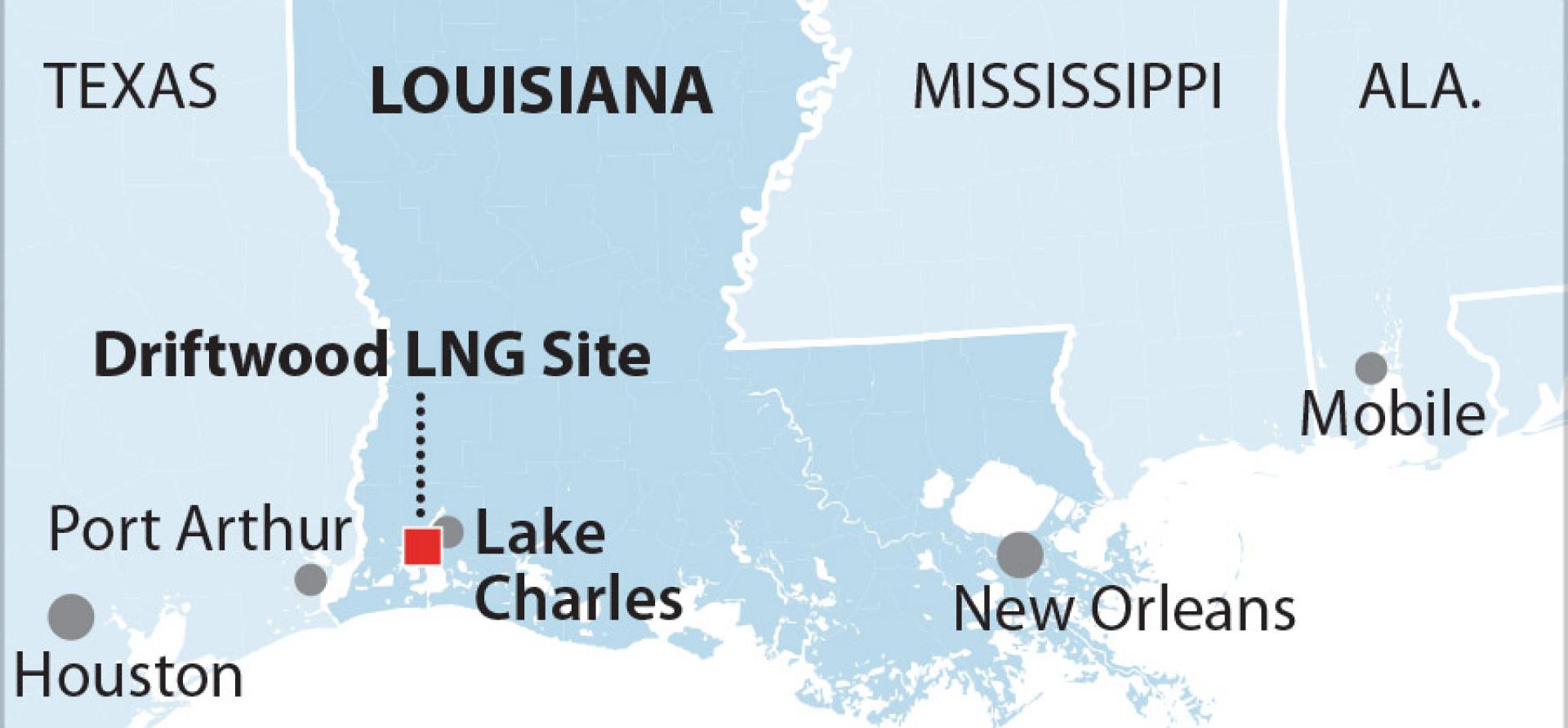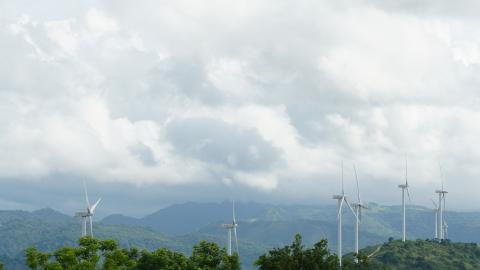Killing blows for Driftwood LNG?

Key Findings
The Driftwood LNG project suffered twin setbacks last week, further weakening the prospects for a proposed LNG export project that has waited six years for a green light.
On Sept. 19, Driftwood’s parent company, Tellurian, Inc., canceled a bond offering that would have injected $1 billion in much-needed capital into Driftwood’s construction.
And on Sept. 23, the company announced the cancellation of commitments by Shell and Vitol to buy LNG from the project, which slashed Driftwood’s sales volumes by two-thirds.
The company’s shares fell by 15 percent, continuing a stock collapse that has cut Tellurian’s value almost in half during the past month.
How the mighty have fallen.
The Driftwood LNG project—brainchild of Charif Souki, heralded as the visionary force behind the U.S. liquefied natural gas industry—suffered twin setbacks last week, further weakening the prospects for a proposed LNG export project that has waited six years for a green light.
On Sept. 19, Driftwood’s parent company, Tellurian, Inc., canceled a bond offering that would have injected $1 billion in much-needed capital into Driftwood’s construction. And on Sept. 23, the company announced the cancellation of commitments by Shell and Vitol to buy LNG from the project, which slashed Driftwood’s sales volumes by two-thirds.
At first, Tellurian executives tried to put a positive spin on the dismal news, claiming that losing old customers would give the company room to sign up new ones. But the stock market was having none of it, pushing the company’s shares down by 15 percent on the day, the continuation of a stock collapse that has cut Tellurian’s value almost in half during the past month.
Recognizing that the good news story wasn’t selling, Souki pivoted, arguing that investors should henceforth think of Tellurian not as an LNG company at all, but instead as a domestic gas production company with a “holy grail” aspiration of selling gas on international markets.
Driftwood was once seen as a rare bright spot for the U.S. LNG industry, which lost its momentum amid low global prices and the COVID-19 downturn. Yet signs of Tellurian’s struggles were evident to those who looked.
In the doldrums of mid-2021—well before Russia’s manipulation of European gas markets caused global LNG prices to skyrocket—Tellurian signed a trio of risky LNG supply contracts with Shell, Vitol, and commodity trader Gunvor. Unlike the 20-year, fixed-fee contracts that underpinned the first wave of the U.S. LNG buildout, Tellurian’s contracts lasted for only 10 years and offered variable liquefaction fees.
Further, the contracts were indexed to highly volatile Asian and European gas prices—meaning that if prices took a wrong turn, Tellurian could lose money on every cubic foot of gas that it processed. To limit the risk, Tellurian aimed to produce its own natural gas, at prices it could control. But that strategy entailed hazards of its own, including the massive capital costs, execution risks, and competitive pressures of becoming a major natural gas producer, amid a host of companies that had a decade-long head start on Tellurian.
But now the company is almost back where it was at the beginning of 2021—underfunded and undersubscribed.
Ironically, Russia’s meddling in global gas markets exposed the weaknesses in Tellurian’s plans. Shell, Gunvor, and Vitol must have realized that they would actually lose out under the contracts they had signed, since most of the upside of high prices would have gone to Tellurian. Even so, investors worried about the ballooning cost of the company’s ambitions, at a time when both construction costs and U.S. gas prices were skyrocketing. Besides, Driftwood wouldn’t start production for another five years or so—and with the global LNG market in turmoil, that would be more than enough time for today’s lucrative contracts to turn into money-losers.
So as several other LNG projects found backers and moved towards construction, Driftwood remained stuck in neutral. The company tried to create the appearance of momentum by giving a go-ahead for limited construction work, such as site-clearing and preparation. But the company could never reel in the $13 billion investment needed to authorize full construction of the project.
Unfortunately for Tellurian, the clock was ticking. The supply contracts gave Shell and Vitol an exit ramp if Driftwood hadn’t obtained full financing by the end of July 2022. The deadline passed, and Tellurian negotiated contract extensions that that either party could terminate without notice. At the same time, the company launched a bid to issue $1 billion in bonds, yielding an eye-popping interest rate of 11.25 percent, to keep construction moving forward. Even after the underwriter sweetened the bonds, raising the effective yield to 12.5 percent, Tellurian still found no takers. (It probably didn’t help that, during its fundraising efforts, an investor accused Tellurian’s executive team of mismanagement and nepotism.)
Observing the delays and fundraising turmoil that Tellurian was suffering, Shell pulled the ripcord, cancelling its contract with Tellurian. Vitol might have followed suit, if Tellurian hadn’t kicked them to the curb first. But now the company is almost back where it was at the beginning of 2021—underfunded and undersubscribed.
Although Driftwood was clearly the quirkiest and riskiest of the U.S. LNG projects on the drawing board, it’s not the only project that is having a hard time right now.Despite record LNG prices in Europe and Asia, only two projects (Venture Global’s Plaquemines LNG project and an expansion of Cheniere’s Corpus Christi facility) have moved forward since the outbreak of the Ukraine conflict. More than a dozen projects are waiting for financing, but several appear to be losing ground. For example, federal permitting agency recently paused its review of New Fortress Energy’s offshore “Fast LNG” proposal due to “insufficient” responses from the company, and an explosion at the Freeport LNG plant has likely stalled investors’ interest in expansion plans at the terminal.
This isn’t to say that all U.S. LNG projects will face the same problems as Driftwood. Still, there seems to be an industry-wide shakeout underway, with weak projects facing more obstacles and more resistance from lenders. Meanwhile, headwinds for new projects continue to pick up speed. Inflation is boosting construction costs for LNG projects. Sustained high U.S. gas prices—caused by LNG exports themselves—have eroded the industry’s competitive advantages. Concerned citizens living near LNG projects are raising alarm bells about pollution and economic impacts. The risk of a global recession looms larger. And LNG demand destruction in both Europe and Asia, caused by high prices and limited global supplies, is adding to the uncertainty about the fuel’s future.
It's too early to call Driftwood’s troubles the start of a down-cycle for the U.S. LNG industry. But at a minimum, the LNG hype that Russian gas market manipulation helped inflate has started to deflate—with irrational exuberance giving way to a more sober outlook for a smaller and slower-growing LNG sector.
Clark Williams-Derry ([email protected]) is an IEEFA energy finance analyst.















